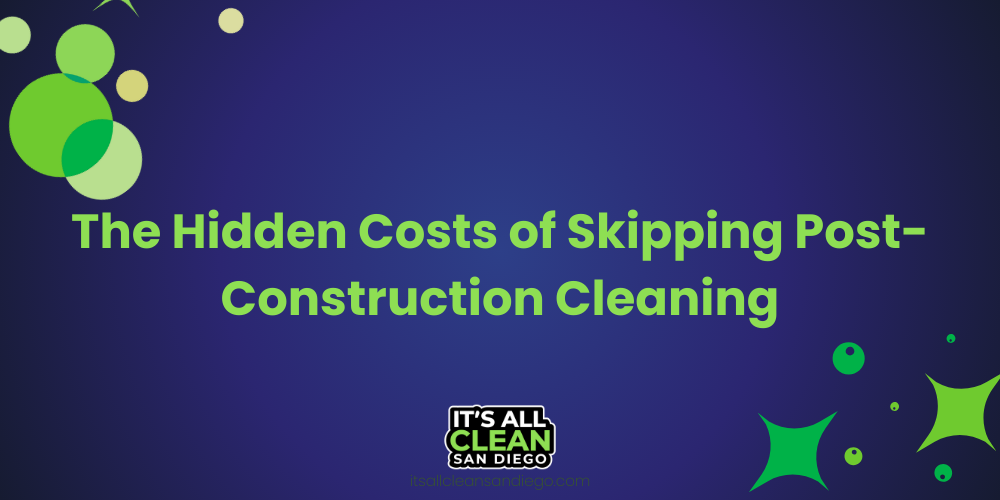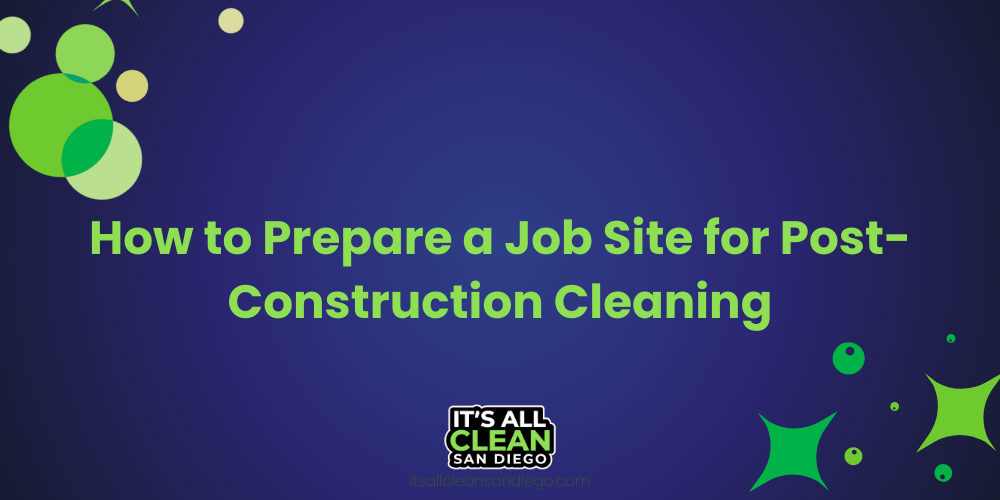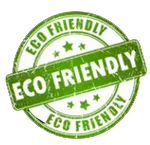San Diego, CA
Carpets are an essential part of any home or business space. They add warmth, comfort, and a touch of style—but keeping them clean can be a challenge. You might notice that sometimes, after a professional cleaning or a DIY shampooing session, your carpet seems to get dirty again faster than before. It’s a frustrating and confusing situation, especially when you’ve just invested time and money into making your floors look their best.
So, why do carpets look dirty faster after cleaning? The answer lies in a combination of cleaning methods, residues, environmental factors, and even the carpet’s material. Understanding these causes will help you prevent re-soiling and keep your carpets fresher for longer.
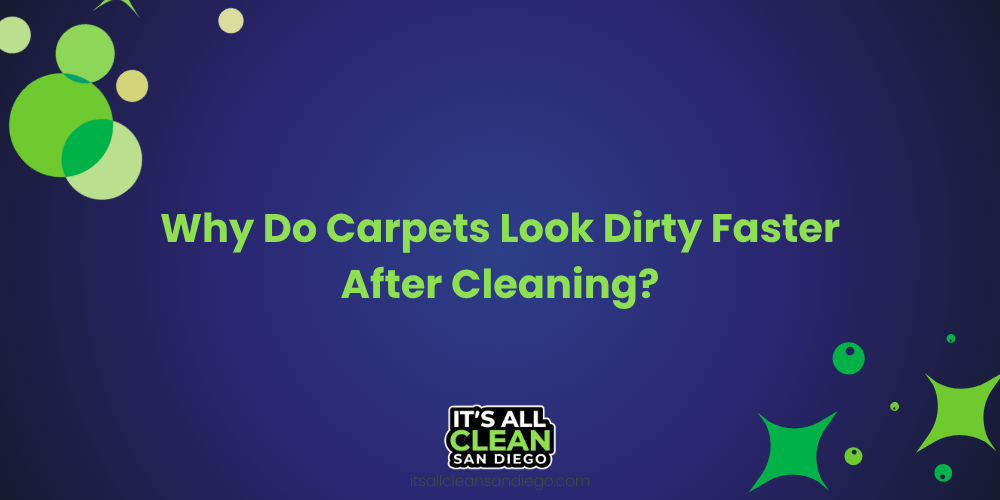
1. Residue from Improper Cleaning Solutions
One of the most common reasons carpets get dirty quickly after cleaning is leftover soap or detergent residue.
Many cleaning products, especially DIY or over-the-counter carpet shampoos, are not fully rinsed out during the cleaning process. When detergent or shampoo residues remain embedded in the carpet fibers, they act like magnets for dirt, dust, and other debris.
These residues leave behind a sticky film that attracts particles from shoes, pets, and the air. Over time, this buildup makes your carpet look dull and dirty again—sometimes within just a few days.
How to avoid it: Always use a professional carpet cleaner or hire a service that uses high-quality, residue-free cleaning solutions. Reputable companies—like It’s All Clean San Diego—use professional-grade hot water extraction (steam cleaning) equipment designed to thoroughly rinse and extract cleaning agents, leaving your carpet fibers clean and residue-free.
2. Incomplete Rinsing or Extraction
Even if the right cleaning solution is used, improper rinsing or extraction can still lead to rapid re-soiling.
When carpet cleaning machines don’t extract enough water or cleaning solution, dirt and soap remain trapped deep within the fibers. As the carpet dries, these particles wick up to the surface, creating new stains and dull patches.
DIY carpet cleaners, especially rented or low-powered machines, often lack the suction power required to fully extract moisture and contaminants. The result? A carpet that looks good for a short while, but quickly attracts grime again.
Professional solution: Certified technicians use industrial-strength extraction systems that remove nearly all moisture, dirt, and residue from the carpet. This not only ensures deeper cleaning but also faster drying times—reducing the chance of mold, mildew, or rapid re-soiling.
3. Over-Wetting the Carpet
Over-wetting happens when too much water or cleaning solution is applied during cleaning. It can cause multiple issues, including fiber distortion, shrinkage, and re-soiling.
When the backing and padding underneath the carpet become saturated, they take a long time to dry. During this extended drying period, dirt from below the surface can migrate upward—causing those mysterious dark spots or uneven discoloration that appear days after cleaning.
The fix: Professional cleaners carefully control water temperature, pressure, and moisture levels. The goal is to clean deeply without soaking the backing or padding. Using modern, truck-mounted systems ensures precise moisture control, leaving carpets just slightly damp to the touch and completely dry within hours.
4. Rapid Re-Soiling from Traffic and Airborne Dust
Even if your carpet is cleaned perfectly, environmental factors can make it look dirty again faster.
High-traffic areas like hallways, entryways, and living rooms are naturally prone to rapid re-soiling. When people walk on damp carpet fibers—especially before the carpet is fully dry—they press dirt and oils from shoes into the surface.
Additionally, airborne dust and pollutants can settle on carpet fibers soon after cleaning, particularly in homes with pets, open windows, or HVAC systems that haven’t been recently cleaned.
How to maintain cleanliness longer:
- Avoid walking on freshly cleaned carpets until they’re completely dry.
- Place mats at entryways to reduce tracked-in dirt.
- Vacuum regularly (2–3 times per week) to remove loose debris before it settles deep into fibers.
- Schedule professional cleaning every 6–12 months to maintain fiber health and cleanliness.
5. Incorrect Cleaning Products for the Carpet Type
Not all carpets are made from the same materials, and each type requires specific cleaning methods and products.
For instance, wool carpets are sensitive to high alkalinity, while synthetic fibers like nylon or polyester can tolerate more aggressive cleaning agents. Using the wrong type of cleaner can damage fibers, strip away protective coatings, or leave residues that trap dirt.
Professional advantage: Trained cleaners test carpet fibers before selecting cleaning agents. Companies like It’s All Clean San Diego use specialized solutions matched to your carpet type, ensuring thorough cleaning without damage or premature wear.
6. The "Wicking Effect"
Have you ever cleaned a carpet stain that seemed to disappear—only for it to reappear days later? That’s known as wicking, and it’s another reason carpets may seem to get dirty fast after cleaning.
Wicking happens when deep-set stains or soil in the carpet backing are brought to the surface as the carpet dries. The moisture carries contaminants upward, leaving a visible residue once the water evaporates.
This can occur after improper cleaning, over-wetting, or incomplete extraction.
Solution: Professional cleaners use deep extraction techniques and sometimes apply encapsulation treatments that trap and remove dirt particles from below the surface. This prevents re-soiling and ensures the carpet dries evenly, reducing the risk of wicking.
7. Lack of Carpet Protection After Cleaning
Many modern carpets come with factory-applied stain protectants—but these wear off over time. If you don’t reapply protection after cleaning, your carpet is more vulnerable to spills, oils, and dirt adhesion.
Applying a professional-grade carpet protectant (such as Scotchgard™) after cleaning helps repel liquid, dust, and grime, keeping the fibers cleaner for longer.
Why it matters: Protection creates a barrier between the carpet and contaminants, giving you more time to clean up spills before they cause permanent stains. It also helps maintain the carpet’s texture and color, extending its lifespan.
8. Low-Quality or Outdated Cleaning Equipment
Even with the right cleaning solutions, outdated or poorly maintained equipment can cause more harm than good.
Old carpet cleaners might not produce enough heat, pressure, or suction to properly clean and extract dirt. This leads to uneven cleaning, lingering residues, and inconsistent drying—all of which make carpets soil faster afterward.
Professional advantage: Modern cleaning systems, like those used by It’s All Clean San Diego, employ truck-mounted hot water extraction units that combine powerful suction and controlled heat. This ensures a deep, even clean that removes soil, allergens, and residue without over-wetting.
9. Carpets That Haven’t Been Cleaned in a Long Time
0If your carpets haven’t been professionally cleaned in years, they’ve likely accumulated layers of dirt, oils, and embedded particles.
When these layers are disturbed during cleaning, the deeper soils can migrate upward, causing the carpet to look dirty again soon after drying. In these cases, it may take multiple cleanings to completely remove the buildup and restore the carpet’s true color and texture.
Preventative tip: Regular maintenance is key. Schedule carpet cleaning at least once every 6–12 months, depending on traffic and usage, to prevent deep soil buildup that causes rapid re-soiling later.
10. Environmental Humidity and Drying Conditions
Carpets cleaned in humid environments or poorly ventilated areas can take longer to dry. This extra drying time allows dust and airborne particles to settle and stick to damp fibers, leading to early re-soiling.
Solution: Ensure good airflow with fans, open windows, or dehumidifiers after cleaning. Professionals often use high-speed air movers to accelerate drying and reduce re-contamination risk.
Keeping Carpets Cleaner, Longer
Carpets that look dirty soon after cleaning can often be traced to improper cleaning techniques, residues, or environmental factors. The best way to prevent this frustrating issue is to:
- Use professional cleaning services with high-quality, residue-free products.
- Avoid over-wetting and ensure thorough extraction.
- Reapply protective treatments after each cleaning.
- Maintain regular vacuuming and prompt spot cleaning between professional visits.
When done right, carpet cleaning should extend your carpet’s life—not shorten it.
Restore and Protect Your Carpets with the Experts
Don’t let poor cleaning techniques undo your investment. At It’s All Clean San Diego, we specialize in residue-free, deep carpet cleaning for both residential and commercial clients. Our trained technicians use cutting-edge equipment and eco-friendly products to ensure your carpets stay cleaner, fresher, and healthier for longer. Whether it’s your home, office, or retail space, we guarantee exceptional results every time.
Contact It’s All Clean San Diego today for a free estimate and discover why our professional carpet cleaning services make all the difference in keeping your floors looking their best!
- All rights reserved -
It's All Clean San Diego © 2021
Pick a service, and we’ll be there.
Your go-to clean, green, full-service team.
Got a mess? We’ve got you covered. At It’s All Clean San Diego, we have professional commercial cleaning and residential house cleaning services for every need.
Our family-owned, full-service professional floor cleaning company has served residential and commercial customers in San Diego for nearly 20 years.


